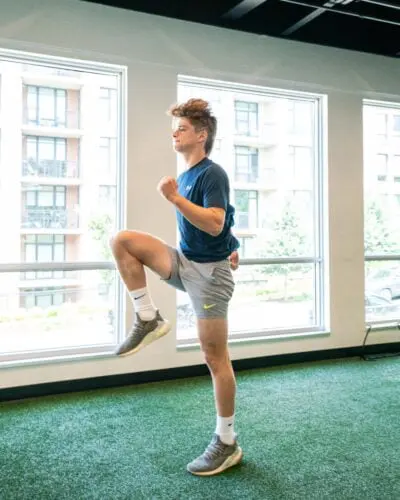Have you been told to always keep your back straight and stiff when lifting? When it comes to preventing back pain, the truth is, it’s not as simple as that.
For years, the advice to lift with a “perfectly straight back” has been the go-to solution, but there’s no solid evidence that it reduces back pain or injury. Surprised? Let’s explore why this outdated advice might be holding you back and how back pain physical therapy can help you build a stronger, more resilient back.
Debunking the “Straight Spine” Rule
The idea of lifting with a straight, neutral spine has been considered the gold standard for decades. It seems logical: keep your back rigid to keep it safe. But studies reveal that this advice hasn’t reduced back injuries in the workplace. Why? Because back pain isn’t caused by a single factor like lifting posture.
Back Pain: A Multifactorial Issue
Back pain is influenced by many factors—age, fitness level, recovery habits, stress, and even sleep quality. If you’ve experienced back pain after lifting, chances are the issue wasn’t simply bending your spine. The root cause is often a combination of problems, like poor endurance, lack of strength, or inadequate recovery.
Physical therapy for back pain can help you address these factors by improving your overall strength and movement capacity, rather than just focusing on how you lift.
Why Avoiding Spinal Flexion Can Be Harmful
The advice to “never bend your back” can actually weaken your spine over time. Avoiding natural movements like bending or twisting may leave your back less prepared for real-world demands.
Think about it: everyday life involves movements like lifting a laundry basket, picking up a child, or twisting to grab something off a shelf. Avoiding these actions doesn’t protect you—it makes your back less adaptable and more vulnerable to injury.
Through physical therapy, you can safely reintroduce these movements and build the confidence and strength needed to handle life’s physical demands.
How to Build a Strong, Pain-Free Back
Preventing back pain isn’t about avoiding movement—it’s about building strength and resilience. Here’s how physical therapy can help:
- Train for Everyday Life: Your physical therapist will guide you through exercises that mirror real-world movements, like squats, deadlifts, and rotational lifts.
- Gradual Progression: With a personalized plan, you’ll start with lighter loads and progress over time, preparing your spine for various challenges.
- Movement Variety: Learn how to lift using different techniques—straight back for heavier loads, rounded back for lighter ones—to build adaptability and confidence.
- Listen to Your Body: If a movement feels painful, your therapist will help you modify it and reintroduce it as you get stronger.
The Role of Physical Therapy in Back Pain Recovery
If you’re recovering from a back injury, physical therapy for back pain can help you uncover the root cause of your discomfort and create a tailored plan to address it. This approach not only relieves pain but also prevents future issues by improving strength, mobility, and movement patterns.
Take Control of Your Back Pain Today
Rigid rules like “always lift with a straight back” oversimplify a complex issue. Instead of avoiding movement, embrace it. With the right guidance from physical therapy, you can prepare your back for life’s twists and turns while building strength and resilience.
If you’re ready to overcome back pain and get back to the activities you love—whether it’s the gym or everyday tasks—schedule an evaluation with one of our expert Doctors of Physical Therapy. Click here to get started!
Let’s build a stronger, pain-free back together. Because when it comes to your spine, you’re stronger than you think.




